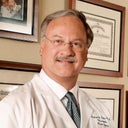Firmness after breast augmentation has absolutely nothing to do with the implants--rather, firmness early on after surgery is due to swelling, tightness/spasm in the muscles (presuming submuscular placement), and incomplete scar maturation. By 6 weeks post-op, most of the early "high and tight" feeling should be settling, or at least beginning to show signs of improvement. This is because most of the immediate surgical swelling has subsided, the muscles have been getting "used to" their newly stretched position over the implants, and the scars are beginning to become less firm. "Final" scar maturation, softening, and settling will take an average of 7 months, which is why most surgeon will tell patients it takes up to a year to see their final results.Truthfully.Which begs the question--why are you getting a revision this soon? And for what reason?If your surgeon tells you your implants "do not need massage" this is also presumably because they are textured implants, which need to adhere to the tissues to have their beneficial effect, proper maintenance of position, and avoidance of rotational malposition. Massage would be counterproductive, especially if that "unneeded massage" causes them to fail to adhere and they rotate upside down, for example. But if you're getting a revision, why does it matter? Even if everything was perfect and no revision was being contemplated, it would still take 6-12 months before your final softness was achieved, and significantly premature to consider re-operation for almost any reason other than hematoma, seroma, or grossly incorrect size choice. Even malposition will change over time, again, unless you have textured implants which will not settle or drop over time since the texture is designed to prevent movement, not allow it. So don't massage without getting much more information from your surgeon, which you may have received, but did not share here.BTW, I also presume you understand "massage" is not really massage at all, but rather implant displacement exercises recommended by many surgeons (I am one of them) for use in patients with smooth implants. These implant displacement movements are designed to keep the surgically-created pockets somewhat larger than the actual implants, allowing the implants/breasts to drop to the side when the patient reclines, which is what normal large(r) breasts do. Natural breasts do not stick straight up in the air like a couple of Tupperware bowls on the chest; they flatten out and drop towards the sides of the chest. Properly-placed implants in pockets larger than the implants allow this natural movement, softness, normal "feel" when hugging someone, as well as allowing a bit of a "safety margin" should some degree of capsular contracture occur.In other words, if the pocket is created 10% larger than the implant it encloses (and implant displacement exercises maintain those pocket dimension) and 5% capsular contracture occurs, there is still 5% margin of softness and safety! Not a bad plan, in my humble estimation.I know many surgeons feel "massage" is not necessary, but it seems as if they are simply willing to accept a somewhat higher percentage of capsular contracture patients. Again, I don't believe that implant displacement exercises "prevent" capsular contracture, but they might just decrease the occurrence and/or severity of it. Thus, your lack of softness has nothing to do with your implants, but everything to do with the short time since your surgery, OR possibly very early capsular contracture (the former is much more likely than the latter). Follow your surgeon's advice and don't rush to revision so soon (even if it is free or minimal charge). Best wishes! Dr. Tholen



